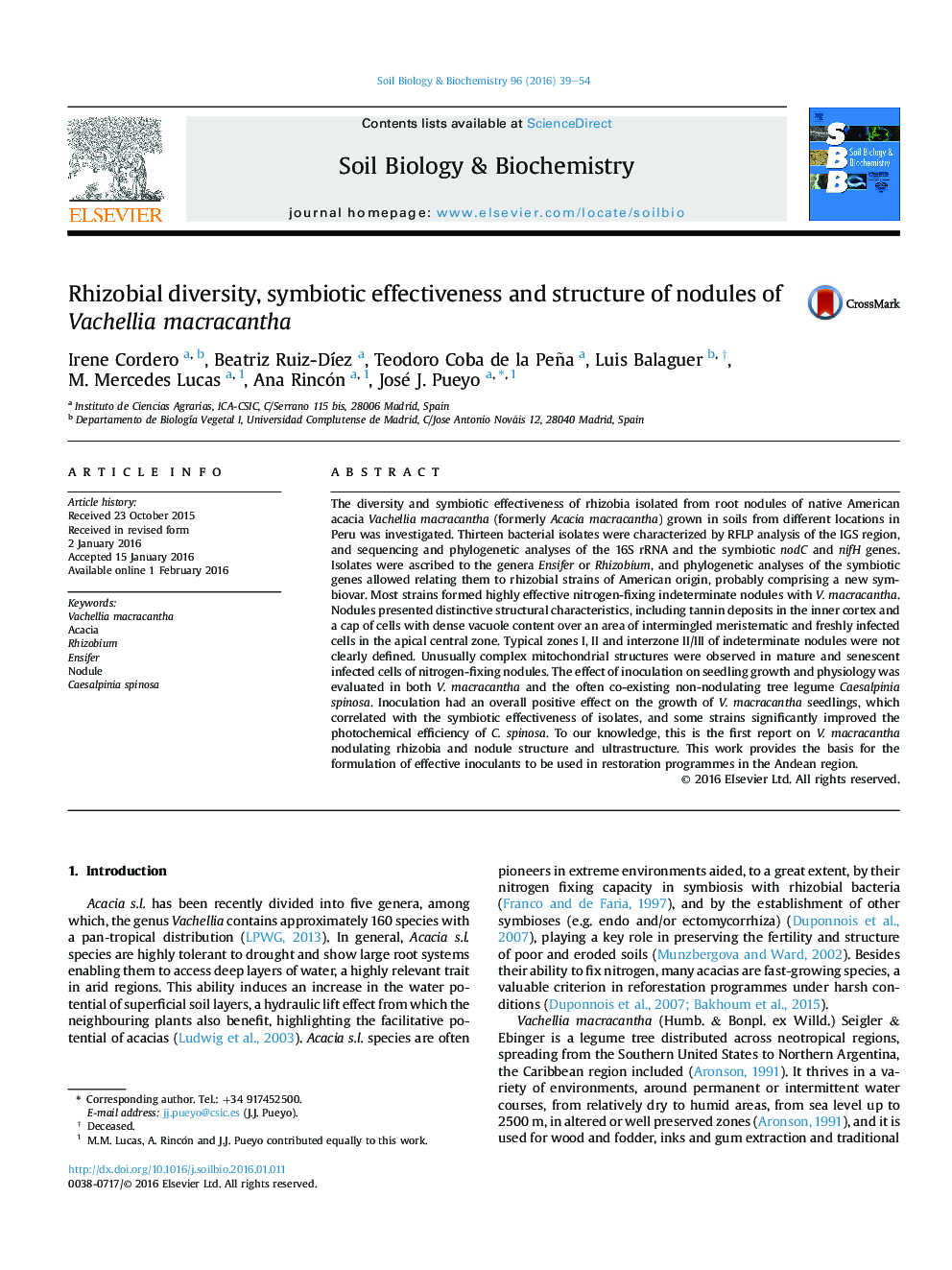| Article ID | Journal | Published Year | Pages | File Type |
|---|---|---|---|---|
| 2024345 | Soil Biology and Biochemistry | 2016 | 16 Pages |
•Rhizobia associated with Vachellia macracantha are characterized for the first time.•Strains are Ensifer or Rhizobium and their symbiotic genes reveal an American origin.•Nodules are indeterminate and present unusual complex mitochondrial structures.•Highly-efficient strains are selected as inoculants for restoration programmes.
The diversity and symbiotic effectiveness of rhizobia isolated from root nodules of native American acacia Vachellia macracantha (formerly Acacia macracantha) grown in soils from different locations in Peru was investigated. Thirteen bacterial isolates were characterized by RFLP analysis of the IGS region, and sequencing and phylogenetic analyses of the 16S rRNA and the symbiotic nodC and nifH genes. Isolates were ascribed to the genera Ensifer or Rhizobium, and phylogenetic analyses of the symbiotic genes allowed relating them to rhizobial strains of American origin, probably comprising a new symbiovar. Most strains formed highly effective nitrogen-fixing indeterminate nodules with V. macracantha. Nodules presented distinctive structural characteristics, including tannin deposits in the inner cortex and a cap of cells with dense vacuole content over an area of intermingled meristematic and freshly infected cells in the apical central zone. Typical zones I, II and interzone II/III of indeterminate nodules were not clearly defined. Unusually complex mitochondrial structures were observed in mature and senescent infected cells of nitrogen-fixing nodules. The effect of inoculation on seedling growth and physiology was evaluated in both V. macracantha and the often co-existing non-nodulating tree legume Caesalpinia spinosa. Inoculation had an overall positive effect on the growth of V. macracantha seedlings, which correlated with the symbiotic effectiveness of isolates, and some strains significantly improved the photochemical efficiency of C. spinosa. To our knowledge, this is the first report on V. macracantha nodulating rhizobia and nodule structure and ultrastructure. This work provides the basis for the formulation of effective inoculants to be used in restoration programmes in the Andean region.
